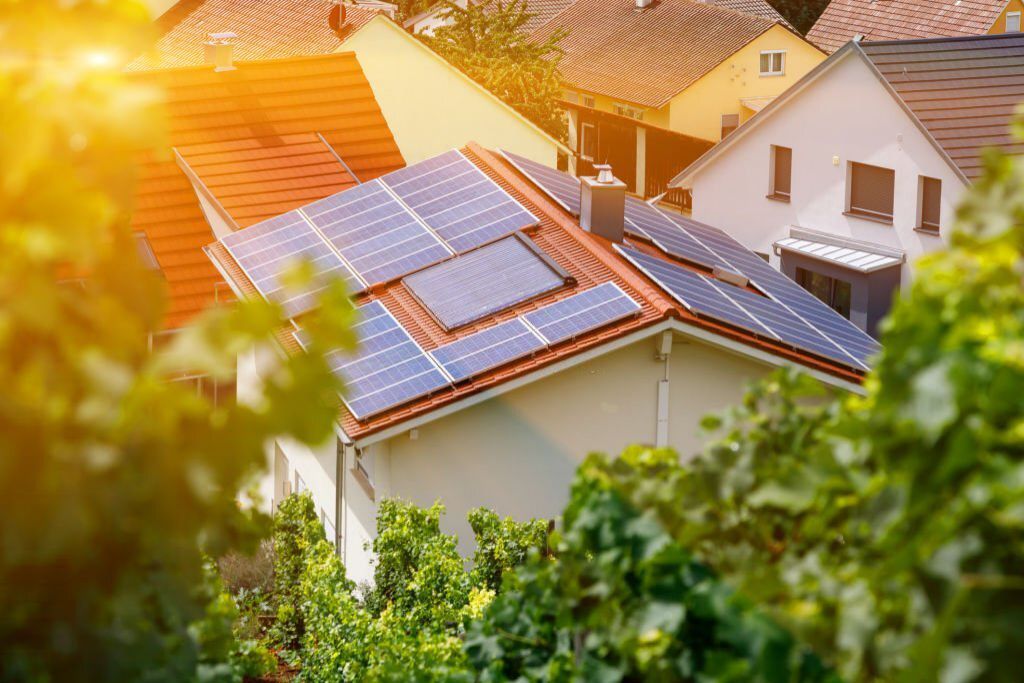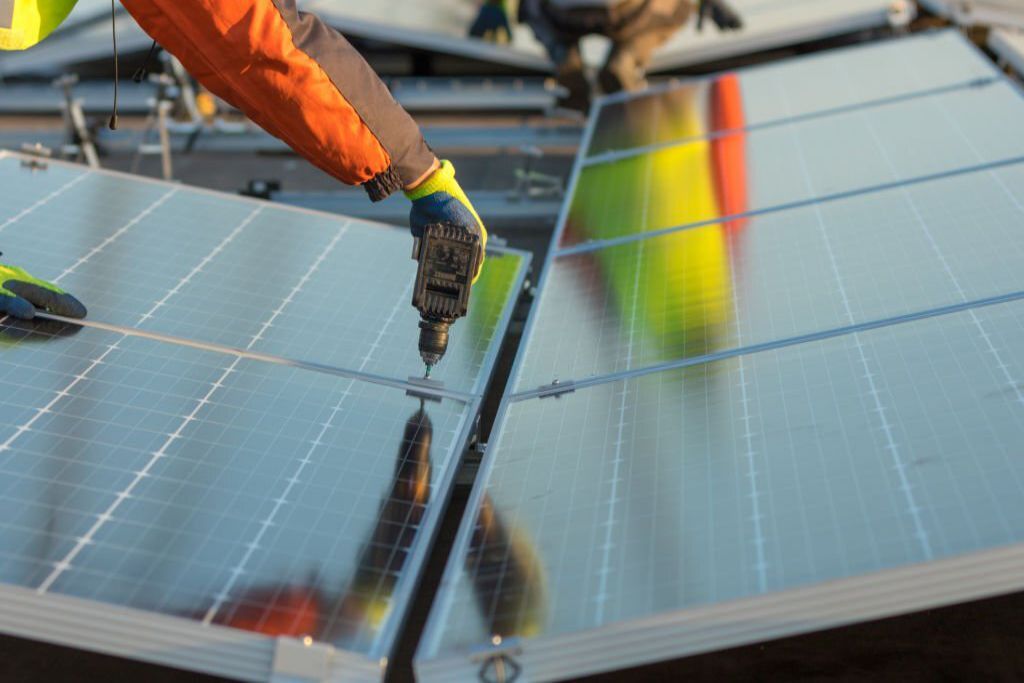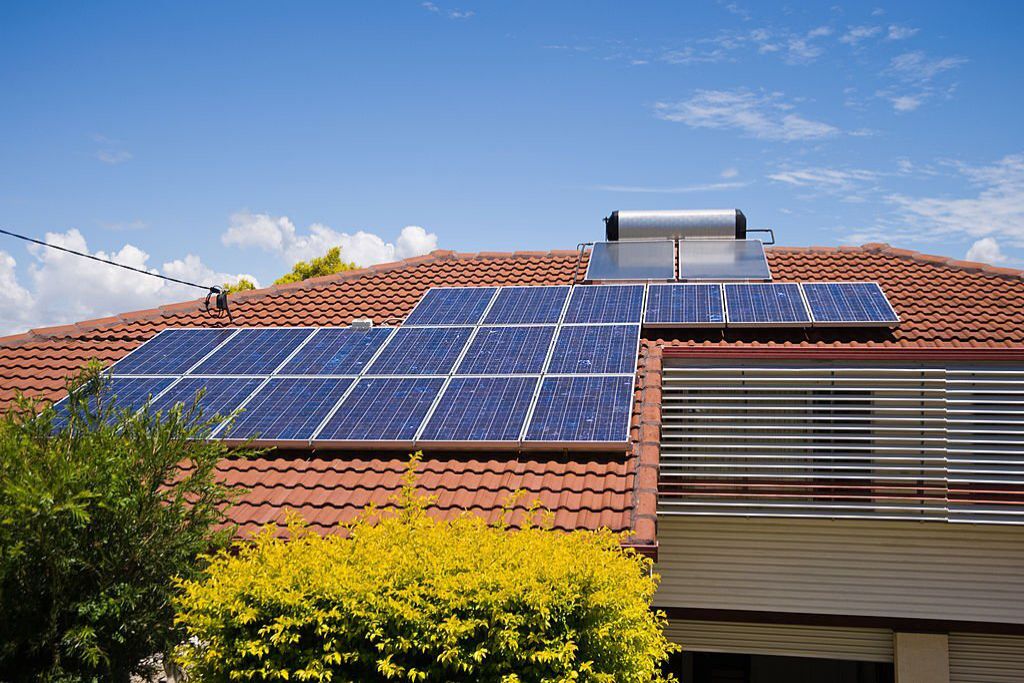Solar Photovoltaic Panels
Solar PV - Our electrical engineers have a lot of experience in solar installation design, installation, and maintenance. Solar panels are an excellent method to save money and get control over your utility expenses. With energy providers raising their power prices, now is a perfect time to build a solar PV system.
What Are Solar Panels?
Switching to alternative energy sources has become critical in the twenty-first century. In Bedfordshire, solar power has become a popular source of energy for homes, offices, and other businesses.
Solar panels, commonly known as photovoltaic (PV) panels, are devices that convert sunlight into electricity. Light is made up of energy particles called "photons," which are turned into electricity.
Multiple solar cells make up a solar panel. When a huge number of solar cells are spread out across a vast region, they can create enough electricity to be useful.
PV cells are made of semi-conductive materials such as silicon. They feature a positive and negative layer that work together to form an electric field.

How Do Solar Panels Work?
Light energy is absorbed in the form of photons when sunlight strikes the semi-conductive substance in the solar PV cell. It loosens a number of electrons, which then float around freely in the cell.
Negatively and positively charged semi-conductors are pressed together to generate an electric field in solar PV cells that are precisely engineered.
The resulting field forces the floating electrons to travel in a precise direction, towards the cell's conductive metal plates. An energy current is the name given to this flow. The intensity of the current determines how much electricity each cell can generate. The current is guided into wires as soon as the free-floating electrons collide with the metal plates, allowing electrons to move as they would in any other source of energy generation.

What Are the Advantages of Using Solar Panels?
Despite their growing popularity, few people in Bedfordshire are aware of the advantages of solar panels. Here are some of the most significant benefits of solar panels.
Understanding The Flow Of Current
The electricity generated by the solar panels travels through a system of wires and into an inverter. Solar panels, on the other hand, generate direct current (DC), whereas buildings typically require alternating current (AC).
An inverter is a device that converts DC electricity into AC electricity, enabling it to be used on a daily basis.
After the electricity is converted to AC power, it is dispersed throughout the building through the breaker box (electrical panel). With solar energy, this electricity may now be used to power electronics.

What Happens To The Unused Electricity?
The excess electricity used by the breaker box is sent to the utility grid via the utility metre.
The utility metre is a device that monitors the flow of power between your home and the grid. The metre runs backwards if your solar energy system produces more electricity than you need, and you earn credits for the surplus through net metering.
When you use more electricity than your solar panel system provides, you draw power from the grid through the metre, which keeps the metre running regularly.

What Is The Procedure For Installing Solar Panels?
Prepare for the process that follows once you've decided to install solar panels in Bedfordshire. There is a lot that must be done to guarantee that solar panels are installed correctly.
How Long Does It Take To Install Solar PV?
You can get a quote and an estimate of how long the full process will take before you choose a supplier. The length of time depends on the intricacy and size of your solar panel system.
It takes a few weeks to acquire quotations and have installers come to your house. However, after you've chosen a supplier, the process won't take long.
In the case of ordinary sized panels, the actual installation should be completed within a day of the scaffolding being completed. Larger panels, on the other hand, may take longer.

Are Solar Panels Worth It?
To figure out whether solar panels are worthwhile, you must first recognise that they are a long-term investment.
Installing a solar panel system might be somewhat costly at first. The advantages, on the other hand, will be progressively realised.
Yes, solar panels are worthwhile in certain circumstances. You will get your money's worth if you generate enough energy and stay in the same house for an extended period of time.
Solar panels eventually pay for themselves over the course of several years.

What Are Solar Panels Made Of?
Solar panels are made up of many solar cells that absorb sunlight and convert it to electricity.
The fundamental material in most solar PV panels is crystalline silicon wafers. In reality, silicon is employed in the production of semi-conductors in nearly all solar panels on the market. The remaining 5% rely on experimental technologies like organic PV cells.
The semi-conductors are in charge of producing electricity. Their electrons are knocked loose when they come into contact with sunlight, resulting in the creation of electricity. The photovoltaic effect is the name given to this process.
Metal, glass, wire, and plastic are among the other components of PV cells. Solar panels are usually covered with a layer of glass. There is also an anti-reflective layer that protects the sensitive silicon cells while enabling light to pass through.
This entire framework is supported with plastic or polymer frames that are required for installation on both rooftop or ground-mounted solar panel systems.
Types Of Solar Panels
Today's solar panels come in a variety of shapes and sizes, thanks to advances in technology.
Mono-crystalline
Solar panels made of mono-crystalline silicon are the most efficient. A single crystal is used to make these silicon panels. They are, however, the most costly sort of panel.
Polycrystalline
Although polycrystalline panels are not as efficient as mono-crystalline panels, they are a cost-effective alternative. Multiple silicon crystals have been fused together to create these silicon cells.
Thin-Film
Thin-film solar cells, which are made of amorphous silicon, are the most flexible solar panels. They are, however, the least effective.
